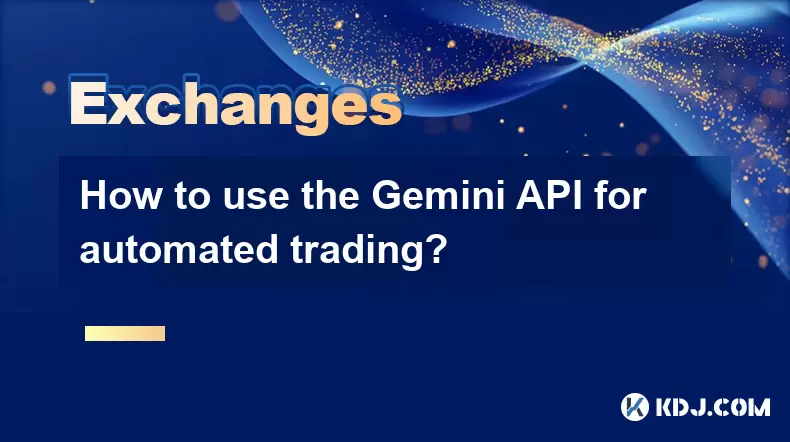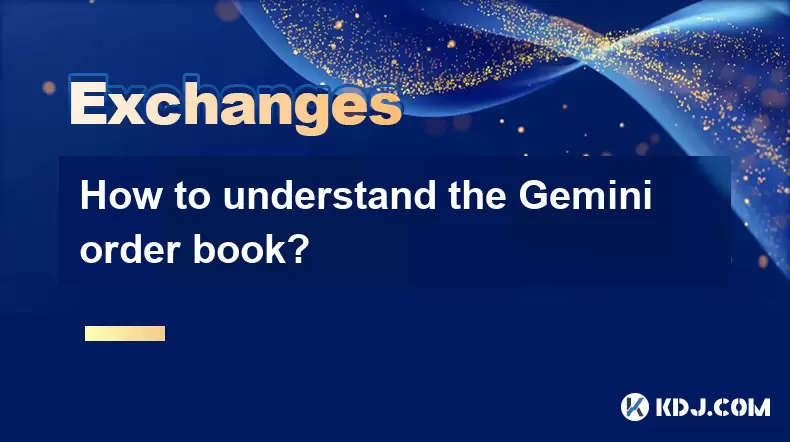-
 Bitcoin
Bitcoin $114400
1.85% -
 Ethereum
Ethereum $3496
2.62% -
 XRP
XRP $2.916
4.75% -
 Tether USDt
Tether USDt $0.9999
0.02% -
 BNB
BNB $751.9
1.74% -
 Solana
Solana $161.2
2.07% -
 USDC
USDC $0.9998
0.00% -
 TRON
TRON $0.3263
1.56% -
 Dogecoin
Dogecoin $0.1987
3.05% -
 Cardano
Cardano $0.7251
4.06% -
 Hyperliquid
Hyperliquid $38.43
4.78% -
 Stellar
Stellar $0.3966
8.00% -
 Sui
Sui $3.431
3.15% -
 Chainlink
Chainlink $16.27
4.03% -
 Bitcoin Cash
Bitcoin Cash $543.3
3.53% -
 Hedera
Hedera $0.2480
8.38% -
 Ethena USDe
Ethena USDe $1.001
0.03% -
 Avalanche
Avalanche $21.38
2.30% -
 Toncoin
Toncoin $3.640
3.41% -
 Litecoin
Litecoin $109.2
3.30% -
 UNUS SED LEO
UNUS SED LEO $8.956
-0.15% -
 Shiba Inu
Shiba Inu $0.00001219
3.22% -
 Polkadot
Polkadot $3.602
3.15% -
 Uniswap
Uniswap $9.153
4.03% -
 Monero
Monero $301.2
3.86% -
 Dai
Dai $0.9999
-0.01% -
 Bitget Token
Bitget Token $4.320
1.80% -
 Pepe
Pepe $0.00001046
4.06% -
 Cronos
Cronos $0.1321
5.83% -
 Aave
Aave $259.0
3.73%
How to use the Gemini API for automated trading?
The Gemini API enables automated trading by allowing developers to securely access market data, place orders, and manage accounts via authenticated HTTP requests.
Aug 04, 2025 at 02:08 am

Understanding the Gemini API and Its Role in Automated Trading
The Gemini API is a powerful tool that enables developers and traders to interact programmatically with the Gemini cryptocurrency exchange. By using the API, users can retrieve market data, place trades, manage orders, and monitor account balances without manually navigating the web interface. The foundation of automated trading on Gemini lies in accessing this API with proper authentication and executing strategies based on real-time data. To begin, developers must generate API keys from their Gemini account, which consist of an API key and a corresponding secret. These credentials are used to sign requests and ensure secure communication. It's critical to enable two-factor authentication (2FA) and restrict API key permissions based on intended use—such as allowing only trading or read-only access—to minimize security risks.
Setting Up Your Development Environment
Before writing any code, ensure your development environment supports the necessary tools. Most developers use Python due to its simplicity and rich library ecosystem. Install the requests library to handle HTTP requests and pycryptodome or cryptography for request signing. You can install these via pip:
pip install requests pycryptodome
Create a dedicated project folder and initialize a virtual environment to isolate dependencies. Store your API key and secret in a secure configuration file or environment variables—never hardcode them in your scripts. Example environment variables:
GEMINI_API_KEY="your_api_key_here"GEMINI_API_SECRET="your_secret_here"
Using environment variables prevents accidental exposure, especially when sharing code or using version control systems like Git.
Authenticating Requests to the Gemini API
Every private API request to Gemini must be authenticated using HMAC-SHA384 encryption. The process involves constructing a JSON payload that includes the request details and timestamp, then signing it with your API secret. Here's how to structure the payload:
- Include the endpoint path
- Add a nonce (a unique, incrementing number or timestamp)
- Specify the request body if applicable
Example payload:
{"request": "/v1/balances", "nonce": 1234567890}Encode this payload in Base64, then generate the HMAC signature using your secret. Set the following headers in your HTTP request:
X-GEMINI-APIKEY: your API keyX-GEMINI-PAYLOAD: the Base64-encoded payloadX-GEMINI-SIGNATURE: the hexadecimal representation of the HMAC signature
Failure to sign correctly results in a 401 Unauthorized error. Test authentication by retrieving your account balance using the /v1/balances endpoint.
Retrieving Market Data for Trading Decisions
Automated trading systems rely on accurate, real-time market data. The Gemini API provides several public endpoints for this purpose. Use the /v1/pubticker/symbol endpoint to get the latest price, bid, ask, and volume for a given trading pair. For example, to fetch data for BTC/USD:
- Send a GET request to
https://api.gemini.com/v1/pubticker/btcusd
The response includes:
- "ask": lowest current sell price
- "bid": highest current buy price
- "last": most recent transaction price
- "volume": trading volume over 24 hours
For historical data, use the /v2/candles/symbol/timeframe endpoint, which returns OHLC (Open, High, Low, Close) data. Supported timeframes include 1m, 5m, 15m, 30m, 1h, 6h, and 1d. This data is essential for backtesting strategies and identifying trends.
Placing and Managing Orders Programmatically
Once your system has market insight, it can execute trades. The primary endpoint for order placement is /v1/order/new. This requires a POST request with a signed payload containing:
- "symbol": trading pair (e.g., "btcusd")
- "amount": quantity to buy/sell
- "price": limit price in USD
- "side": "buy" or "sell"
- "type": typically "exchange limit"
Example payload:
{
"request": "/v1/order/new",
"nonce": 1234567891,
"symbol": "btcusd",
"amount": "0.01",
"price": "50000.00",
"side": "buy",
"type": "exchange limit"
}After submission, the API returns an order ID, status, and execution details. To monitor active orders, use /v1/orders to retrieve all open orders. Cancel an order with /v1/order/cancel by including the order ID in the payload. Use /v1/order/status to check the execution status of a specific order, including filled amount and average price.
Implementing a Basic Trading Bot
A simple trading bot can be built using a loop that checks prices and places orders based on predefined rules. Start by defining a threshold: if BTC price drops below $50,000, buy 0.01 BTC. The bot should:
- Fetch the current BTC/USD price using
/v1/pubticker/btcusd - Parse the "last" price from the JSON response
- Compare it to the threshold
- If condition is met and no open order exists, construct and send a buy order
Use time.sleep() to avoid rate limits—Gemini allows 120 requests per minute for most endpoints. Implement error handling for network issues and API rate limiting (HTTP 429). Log all actions to a file for debugging and auditing. For enhanced functionality, integrate technical indicators like moving averages using libraries such as pandas.
Frequently Asked Questions
Can I use the Gemini API without a verified account?
No. You must have a fully verified Gemini account to generate API keys with trading permissions. Unverified accounts cannot access private endpoints or execute trades.
What are the rate limits on the Gemini API?
Gemini enforces a limit of 120 requests per minute for most endpoints. Exceeding this results in a 429 Too Many Requests response. Implement delays or exponential backoff in your code to stay within limits.
Is WebSocket support available for real-time data?
Yes. Gemini offers a WebSocket feed at wss://api.gemini.com/v1/marketdata/symbol. This provides real-time updates on bids, asks, and trades. Subscribe by sending a JSON message with the symbol and optional fields like "top_of_book" or "auction_events".
How do I handle API key compromise?
Immediately log into your Gemini account, navigate to the API settings, and revoke the compromised key. Generate a new one and update your application's configuration. Enable IP whitelisting if possible to restrict access to trusted servers.
Disclaimer:info@kdj.com
The information provided is not trading advice. kdj.com does not assume any responsibility for any investments made based on the information provided in this article. Cryptocurrencies are highly volatile and it is highly recommended that you invest with caution after thorough research!
If you believe that the content used on this website infringes your copyright, please contact us immediately (info@kdj.com) and we will delete it promptly.
- Bitcoin Price Wobbles: Options Analysis Points to Bullish Undercurrent Despite Dip
- 2025-08-04 04:30:12
- Ark Invest, Coinbase, and Bitcoin: Decoding the Crypto Investment Landscape in NYC
- 2025-08-04 04:30:12
- LILPEPE, Cardano, and Shiba Inu: The 2025 Crypto Landscape
- 2025-08-04 04:50:12
- Cold Wallet, Token Rewards, and Crypto Usage: A New Era?
- 2025-08-04 04:50:12
- Navigating the Wild West: Token Unlocks and Altcoin Surges - A Trader's Guide
- 2025-08-04 02:30:11
- AI, Crypto, and the Frontier: Riding the Wave of Innovation
- 2025-08-04 03:50:11
Related knowledge

How to set and manage alerts on the Gemini app?
Aug 03,2025 at 11:00am
Understanding the Gemini App Alert SystemThe Gemini app offers users a powerful way to stay informed about their cryptocurrency holdings, price moveme...

What to do if you forgot your Gemini password?
Aug 04,2025 at 03:42am
Understanding the Role of Passwords in Gemini AccountsWhen using Gemini, a regulated cryptocurrency exchange platform, your password serves as one of ...

What are the websocket feeds available from the Gemini API?
Aug 03,2025 at 07:43pm
Overview of Gemini WebSocket FeedsThe Gemini API provides real-time market data through its WebSocket feeds, enabling developers and traders to receiv...

How to manage your portfolio on Gemini?
Aug 03,2025 at 10:36am
Accessing Your Gemini Portfolio DashboardTo begin managing your portfolio on Gemini, you must first log in to your account through the official websit...

How to understand the Gemini order book?
Aug 02,2025 at 03:35pm
What Is the Gemini Order Book?The Gemini order book is a real-time ledger that displays all open buy and sell orders for a specific cryptocurrency tra...

How to use the Gemini API for automated trading?
Aug 04,2025 at 02:08am
Understanding the Gemini API and Its Role in Automated TradingThe Gemini API is a powerful tool that enables developers and traders to interact progra...

How to set and manage alerts on the Gemini app?
Aug 03,2025 at 11:00am
Understanding the Gemini App Alert SystemThe Gemini app offers users a powerful way to stay informed about their cryptocurrency holdings, price moveme...

What to do if you forgot your Gemini password?
Aug 04,2025 at 03:42am
Understanding the Role of Passwords in Gemini AccountsWhen using Gemini, a regulated cryptocurrency exchange platform, your password serves as one of ...

What are the websocket feeds available from the Gemini API?
Aug 03,2025 at 07:43pm
Overview of Gemini WebSocket FeedsThe Gemini API provides real-time market data through its WebSocket feeds, enabling developers and traders to receiv...

How to manage your portfolio on Gemini?
Aug 03,2025 at 10:36am
Accessing Your Gemini Portfolio DashboardTo begin managing your portfolio on Gemini, you must first log in to your account through the official websit...

How to understand the Gemini order book?
Aug 02,2025 at 03:35pm
What Is the Gemini Order Book?The Gemini order book is a real-time ledger that displays all open buy and sell orders for a specific cryptocurrency tra...

How to use the Gemini API for automated trading?
Aug 04,2025 at 02:08am
Understanding the Gemini API and Its Role in Automated TradingThe Gemini API is a powerful tool that enables developers and traders to interact progra...
See all articles

























































































